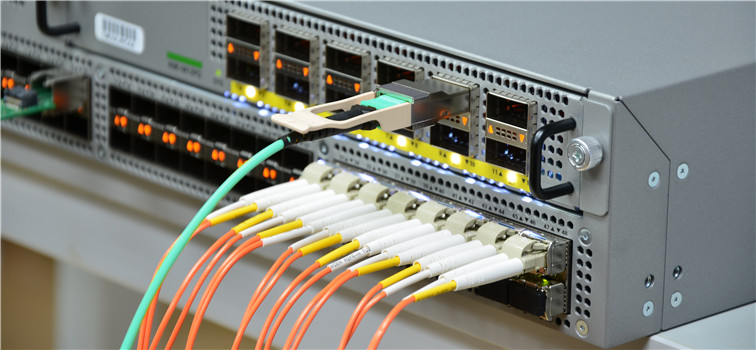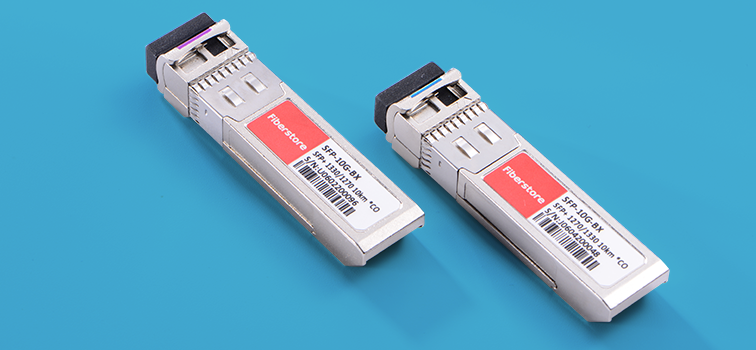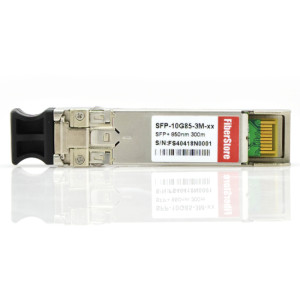10G fiber optic network is being widespread in today’s telecommunication network. A lot of 10G fiber optic devices like switches are being uses, among which Cisco devices are the most commonly used according to statistics. If you choose a Cisco switch, Cisco original brand or Cisco compatible modules like SFP/SFP+ might be needed for transferring between optical signals and electrical signals. This post will offer details about how to select the proper 10G SFP+ module for Cisco switches.
10G fiber optic network is mature now, and there is a wide selection of 10G IEEE standards for different 10G networking applications and environments. Before you buy 10G SFP+ modules for your Cisco switches, you should firstly get to know these 10G standards.
10G IEEE Standards
IEEE has defined 10G standards for different transmission distance and transmission media. For instance, there are 10GBASE-SR SFP+ for short distance up to 300 meters over OM3 multimode optical fiber and 10GBASE-LR for long distance up to 10 kilometers over single-mode fiber. There are also standards for 10G transmission over copper cables like 10GBASE-CR and 10GBASE-T. The following table listed the details for the most commonly used 10G standards.
| 10G IEEE Standards | Description |
| 10GBASE-SR | Support 10G transmission over wavelength of 850nm via multimode fiber in short distances: OM3 (up to 300m) and OM4 (up to 400m). |
| 10GBASE-LR | Support 10G transmission over single-mode fiber up to 10km over wavelength of 1310nm. |
| 10GBASE-LRM | Support 10G transmission over standard multimode fiber up to 200m over wavelength of 1310nm. |
| 10GBASE-ER | Operate over 1550nm wavelength and support transmission distance up to 40km over single-mode fiber. Attenuation is required for transmission distance shorter than 20km. |
| 10GBASE-ZR | Support 10G transmission over 1550nm single-mode fiber optic up to 80km. For short links, attenuation is required to ensure transmission quality. |
| 10GBASE-BX | Support duplex 10G transmission over a single single-mode fiber using two different wavelengths up to 80km. |
| 10G CWDM/DWDM | Support 10G transmission over 1550nm single-mode fiber optic up to 80km. For short links, attenuation is required to ensure transmission quality. |
| 10GBASE-CR | Support 10G transmission over Twinax copper cable in very short distance and offer a cost-effective way for connections within racks. |
Product Name of Cisco 10G SFP+ Modules
The naming system of Cisco 10G SFP+ modules is closely related to the IEEE standards. Here I listed several examples for Cisco SFP+ module to better illustrate how Cisco names its 10G SFP+ modules.
| 10G IEEE Standards | Cisco 10G Modules Product Number Example |
| 10GBASE-SR | Cisco SFP-10G-SR |
| 10GBASE-LR | Cisco SFP-10G-LR |
| 10GBASE-LRM | Cisco SFP-10G-LRM |
| 10GBASE-ER | Cisco SFP-10G-ER |
| 10GBASE-ZR | Cisco SFP-10G-ZR |
| 10GBASE-BX | Cisco SFP-10G-BXD-I & SFP-10G-BXU-I; Cisco SFP-10G-BX40D-I & SFP-10G-BX40U-I |
| 10G CWDM/DWDM | Cisco CWDM-SFP10G-1470; Cisco DWDM-SFP10G-61.41 |
| 10GBASE-CR | Cisco SFP-H10GB-CU1M; Cisco SFP-H10GB-ACU7M |
For common 10G SFP+ modules, Cisco uses the key words of the standards to name the responding modules. For special modules, Cisco has built another naming system.

For a pair of BiDi SFP+ modules, letter “D” and “U” is used to the two modules that are used together on each end of the fiber optic link. For instance, SFP-10G-BXD-I & SFP-10G-BXU-I is a pair of BiDi Modules that can support transmission distance up to 10km. Additional numbers are added to mark the transmission distance of the BiDi modules. SFP-10G-BX40D-I & SFP-10G-BX40U-I is a pair of BiDi SFP+ modules that can support transmission distance up to 40km.
For CWDM 10G SFP+ and DWDM SFP+, the wavelength is added in the part number. For instance, CWDM-SFP10G-1470 is the part number of a CWDM SFP+ that is operated at wavelength of 1470nm. If you want a CWDM SFP+ operating over 1550nm, then the product number of this CWDM module should be CWDM-SFP10G-1550. As all the DWDM SFP+ modules are operated over wavelengths around 1500nm, in the product number of Cisco DWDM SFP+ modules, the first two number 1 and 5 is eliminated. For example, DWDM-SFP10G-61.41 stands for a DWDM SFP+ transceiver with operating wavelength of 1561.41nm.

For modules like SFP+ direct attach cable (SFP+ DAC) and SFP+ active optical cable (SFP+ AOC) which contains a length of cables, Cisco combines the characters of IEEE standard and number to name its modules. Cisco SFP-H10GB-CU1M stands for 10G SFP+ direct attach copper cable that is one-meter long. Cisco SFP-10G-AOC2M is a 2-meter long 10G SFP+ active optical cable.
Except IEEE standard and transmission distance, to select the proper 10G SFP+ module should also considerate several other factors like compatibility and costs.
Although Cisco has a wide selection of switches and 10G SFP+ modules, but not every SFP+ modules can work well on every Cisco switches SFP+ port. Before selecting the SFP+ msodule for your Cisco switch, you must make sure this SFP+ is compatible with your switch.
The second important factor is the costs for the SFP+ modules. Why? SFP+ module is just a small part of the whole fiber optic network, but the use amount of SFP+ module is very large. Cisco Original brand SFP+ modules are usually expensive. Thus, select cost-effective modules are necessary. Actually, Cisco Original brand SFP+ module is not the only choice. There are also many third party modules that it compatible with Cisco switches. Generally, prices of third party fiber optic transceivers are much lower than the original brand ones.
If you have plenty of money, you can directly order the modules from Cisco. However, if you are going to select the third party modules for a cost-effective solution, then the quality and compatibility would be very important. FS.COM is a provider offers a full range of Cisco compatible modules. All its modules are fully tested in original brand switches to ensure the compatibility and quality. What’s more, FS.COM uses the same naming system as Cisco for its Cisco compatible modules and generic fiber optic modules. A list is also offered in the product page of each fiber optic modules showing the compatible switches and platforms. Customer can use the Cisco product number to search Cisco Compatible and generic modules in FS.COM directly.
Related Article:
Cisco SFP-10G-SR: All You Need to Know
A Comprehensively Understanding of Cisco 10GBASE SFP+ Modules



